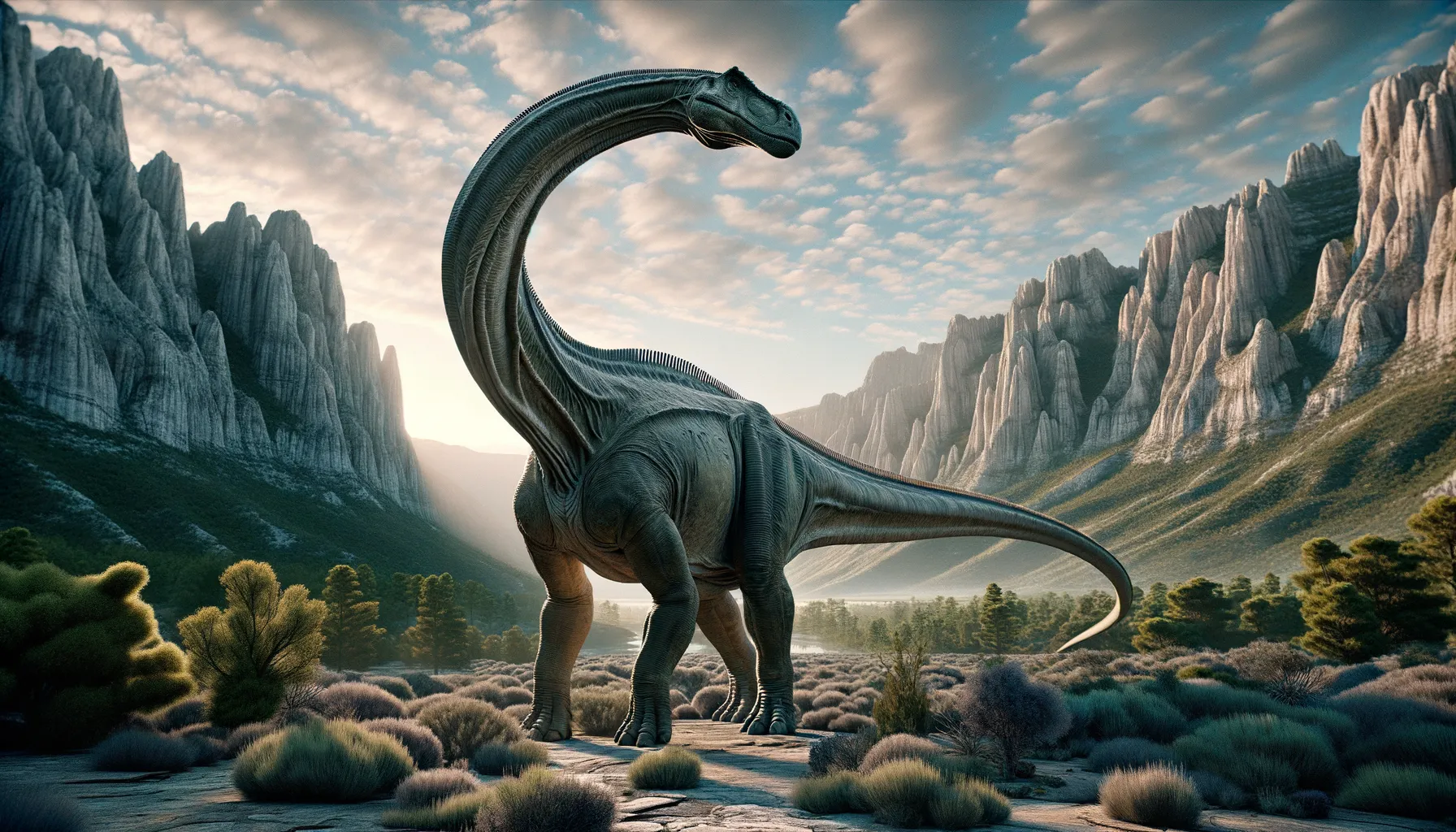
Losillasaurus
The gentle giant of Jurassic Spain.
Period
Jurassic
Length
Approximately 18 meters long.
Height
Around 6 meters tall at the shoulders.
Weight
About 15 metric tonnes.
Losillasaurus was a large sauropod dinosaur from the Late Jurassic Period. It belonged to a group known as titanosaurs, characterized by elongated necks and robust bodies. This herbivorous giant roamed the landscapes of what is now modern-day Spain, living in herds that provided both safety and companionship. Its fossils offer valuable insights into the diversity and distribution of European dinosaurs during the Jurassic era.
Diet
Losillasaurus was a herbivore, feeding on a variety of plants. It likely consumed ferns, cycads, and conifers, using its long neck to reach vegetation.
Hunting
As an herbivore, Losillasaurus did not hunt but rather foraged for plant material. Its large size likely deterred most predators.
Environmental challenges
Losillasaurus faced challenges such as changing climate and shifts in available flora. Competition for resources with other herbivores would have been significant, requiring adaptation. Predatory threats from large theropods might have influenced its herd behavior for protection.
Speed
Likely slow-moving due to its massive size.
Lifespan
Estimated to live several decades.
First discovery
Discovered in Losilla de Aras, Spain, in the 1990s.
Fun Facts
- Losillasaurus was a herbivorous dinosaur that lived during the Late Jurassic period, around 150 million years ago.
- It was discovered in Losilla, a small village in Spain, which is how it got its name.
- Losillasaurus is believed to be part of the sauropod family, known for their long necks and tails.
- Despite its enormous size, Losillasaurus was likely a gentle giant that fed on plants.
- The fossils of Losillasaurus were first unearthed in the 1980s, making it a relatively recent discovery in the dinosaur world.
- Losillasaurus is thought to have used its long neck to reach vegetation in tall trees or to cover a wide area of ground easily.
- Its discovery has helped scientists understand the diversity and distribution of sauropods in Europe during the Jurassic period.
Growth and Development
Growth was relatively slow, with juveniles likely staying close to adults for protection. As it matured, its massive size was both an advantage against predators and a challenge in finding sufficient food.
Habitat
It inhabited lush floodplains and forested areas abundant in vegetation. The environment provided ample food sources but could be unpredictable due to seasonal changes. Water availability would have been crucial for such a large animal.
Interaction with other species
Likely coexisted with other herbivores, competing for similar resources. Predators were a constant threat, necessitating group living for safety. Mutualistic relationships with small animals could have existed, possibly aiding in removing parasites.
Natural lifespan
The natural lifespan is believed to be around 60 to 80 years.
Reproduction
Reproduction likely involved laying eggs, similar to other sauropods. Nests were probably established in sandy or soft soil to protect the eggs. Offspring might have been precocial, maturing relatively quickly after hatching.
Social behaviour
Losillasaurus likely lived in herds, which provided protection and social interaction. Communication would have been essential for maintaining group cohesion and alerting others to danger. Social structures might have included hierarchies or family-based units.
Fossil locations
Fossil remains have been mainly found in Losilla, Spain, contributing to understanding of European sauropods. The region provides a rich source of Late Jurassic dinosaur fossils. These discoveries have helped establish Spain as an important site for studying dinosaur diversity.
